Don’t Send Push Notifications During Halftime
Published on February 06, 2017/Last edited on February 06, 2017/5 min read
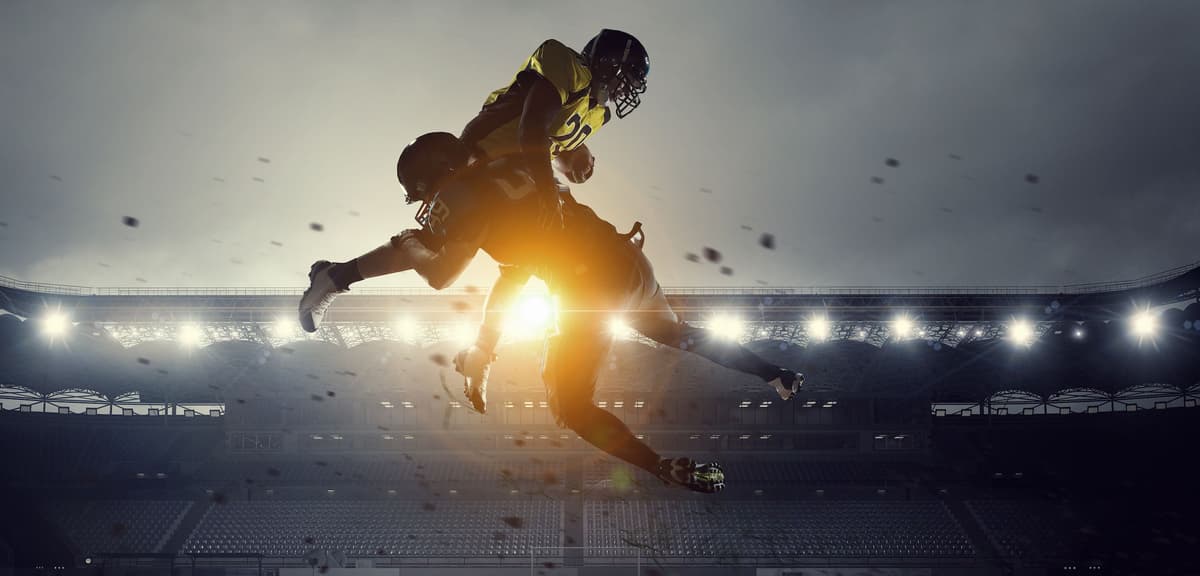

Todd Grennan
Content Production Principal, Content Marketing at BrazeThis year’s Super Bowl was a lot crazier than usual. The first overtime in NFL championship history, plays that seemed to defy physics, and Lady Gaga cavorting with a fleet of drones that looked like the American flag made for a spectacle that viewers won’t soon forget. But even in normal years, the game is one of the biggest things to happen in marketing. With the game pulling in more than 100 million viewers and capturing the public imagination for weeks leading up to kick-off, there’s no end to the brands lining to pay $5+ million for a 30 second ad or to leverage popular interest in the game in their customer messaging.
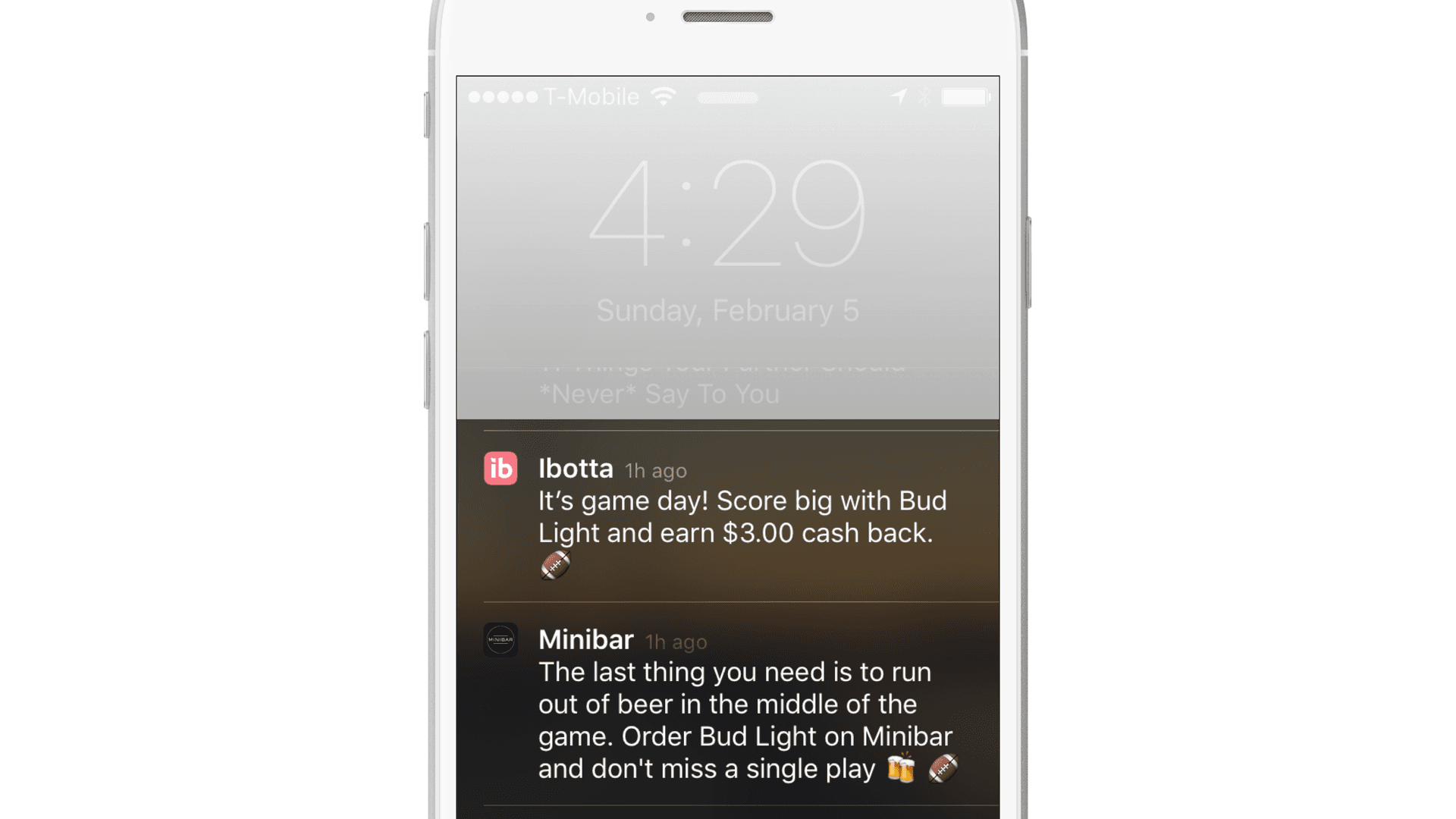
You’re not the only brand trying to engage users on Super Bowl Sunday—so it’s important to make your outreach count
That makes Super Bowl Sunday a significant challenge AND a big opportunity for marketers. If you’re looking for something that a mass audience of people care about and pay attention to, the Super Bowl more than fits the bill, creating powerful opportunities to reach and engage your audience and a world of potential new users. But because other marketers are trying to capitalize on that same opportunity, it can be hard to capture users’ attention amid the haze of distractions and messages from other brands.
Knowing how smartphone and tablet owners actually use their devices and engage with brands on mobile before, during, and after the game makes it possible for marketers to more effectively iterate on their mobile marketing strategies in the run up to next year’s game. So let’s dig into this year’s Super Bowl mobile engagement data:
Trying to reach users during halftime? Good luck with that
For a lot of people, the real reason to pay attention to the Super Bowl year after year isn’t the high level of athletic prowess or the long-simmering team rivalries, but rather the annual halftime show, headlined by the biggest names in music. And while this year’s game could hardly be called boring, it took halftime for mobile users to put down their phones and really focus on their TVs.
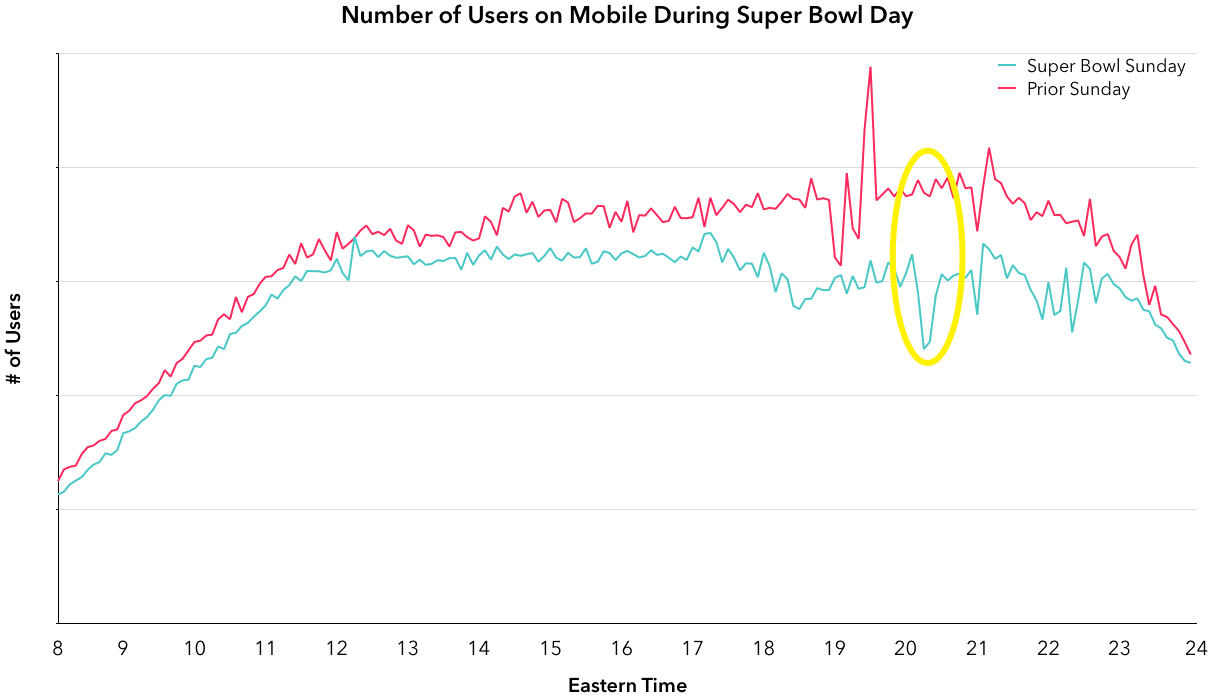
While Lady Gaga flew around on cables and her competing teams of drones and backup dancers wowed viewers, mobile usage dropped by 36%. That makes halftime quite possibly the most difficult time during the Super Bowl to reach people on their mobile devices—especially if your customer messaging leans heavily on push notifications, which work best when delivering urgent, time-sensitive outreach to customers. (Consider using message retargeting to make sure your brand’s voice is heard during these kinds of distraction-filled situations.)
Wins: Food and transportation apps shine on game day
While the TV commercials, halftime, and even the game itself were all hard to look away from, certain mobile apps had a very good night—especially brands where their ability to help support a great game day experience for users is clear to see.
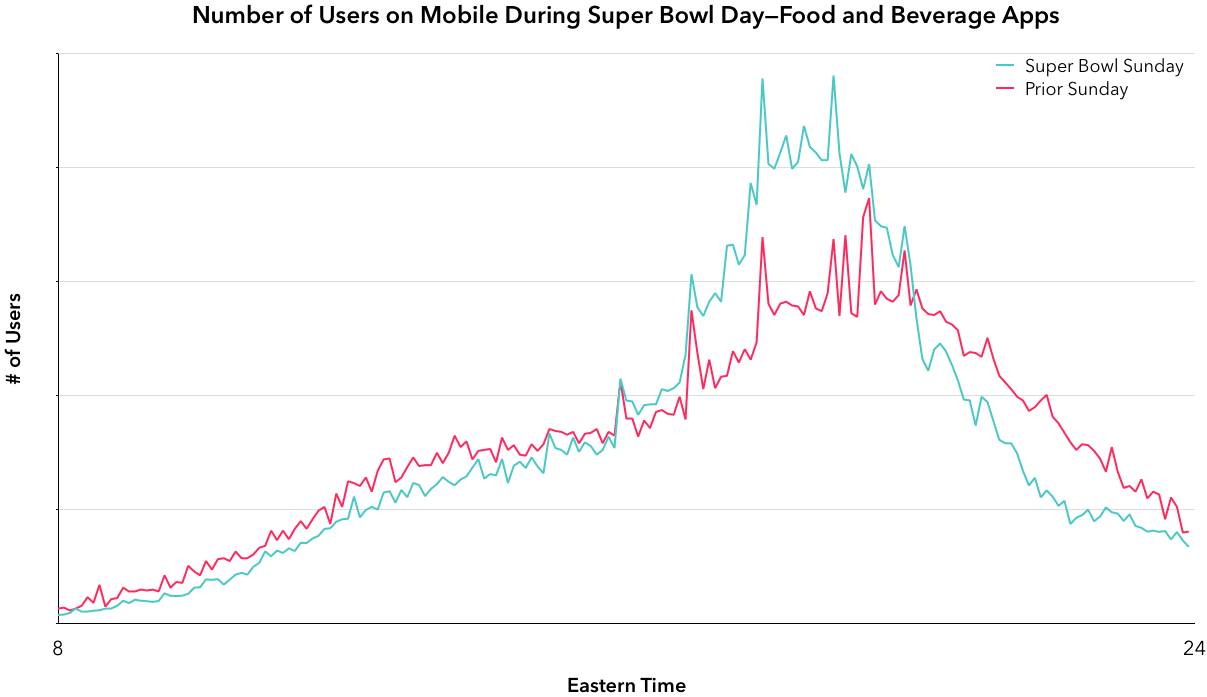
Food and beverage apps make it easy for customers to skip the grocery store (or liquor store, as the case may be) and have game-time snacking and drinking options brought right to them. And that ease and convenience translated into significant engagement during the Super Bowl, with mobile usage being 42% higher from 6–7 p.m. ET than on the previous Sunday.
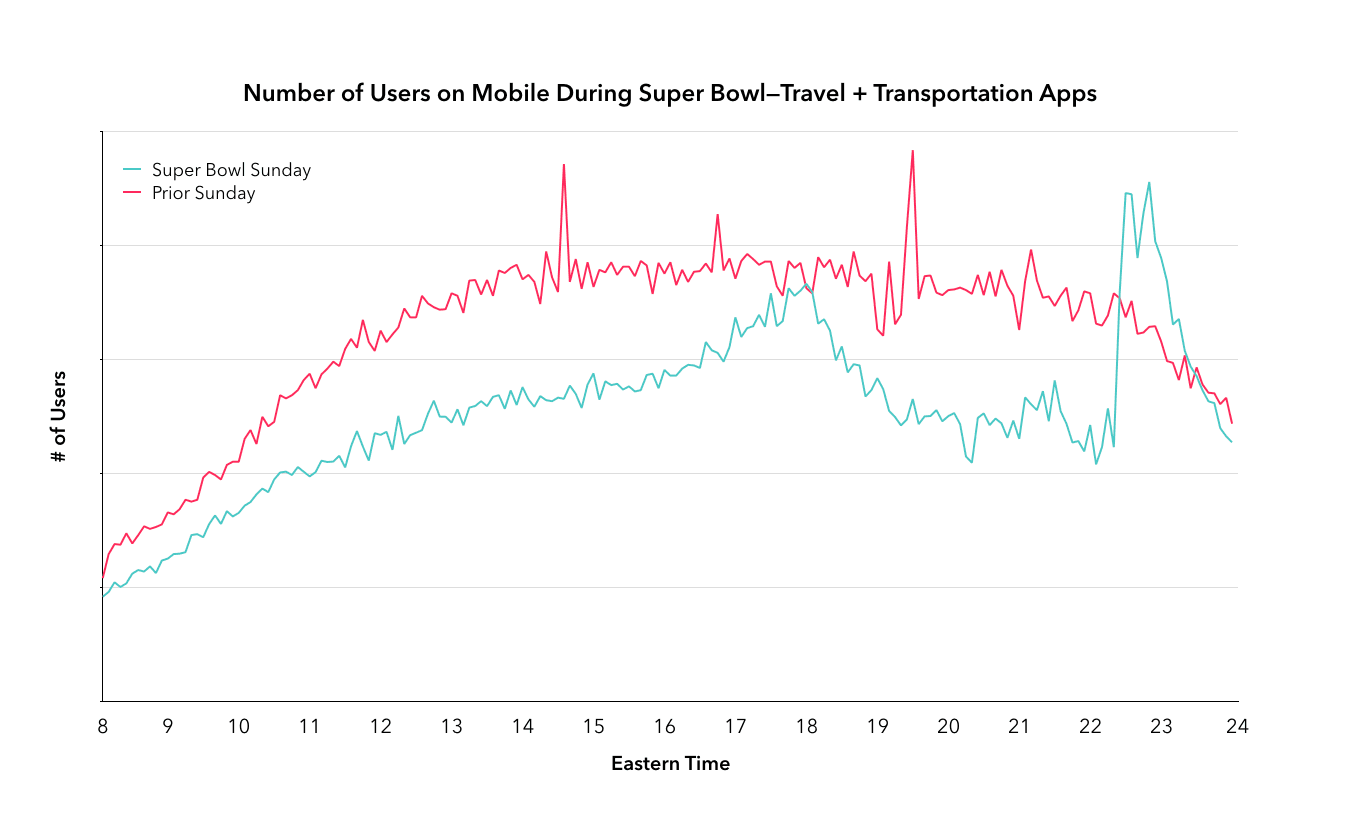
Travel and transportation apps had an even better time of it. Brands in this vertical saw mobile engagement rise 39% during the 10–11p.m. ET period, as viewers made their way home from Super Bowl parties at bars and the houses of friends and family.
Losses: A tough night for education and finance apps
While this year’s Super Bowl was a memorable experience, it wasn’t all confetti and Gatorade showers for apps. Brands whose mobile experience didn’t connect clearly with game day needs had to work harder to keep their users engaged—and a lot of them had a very slow night, with significant drops in engagement compared to the previous Sunday.
Education apps were hit the hardest, with their engagement rates dropping 53% from 6–7p.m. ET, and B2B and finance apps and medical, health, and fitness apps sank 39% and 37%, respectively, during that same time period. Even gaming apps, traditionally a vertical known for its stickiness and frequent user engagement—saw a big decline, with engagement levels from 6–7p.m. ET that were 36% below normal, demonstrating that no brand can safely rest on its laurels on a day like Super Bowl Sunday. (And if this one-day dip turns into a more sustained pattern of declining engagement, make sure you’re ready to take steps to re-engage your lapsing users.)
Final thoughts
Whether Super Bowl Sunday is your vertical’s biggest time of the year, or the day you have the hardest time breaking through to your customers, marketers need a strategy for marketing’s biggest days—and the tools and tactics to make the most of their outreach during the big game and the rest of the year’s major cultural tentpoles. Get started with our exclusivePush Notifications Guide.
If you missed our presentation on mobile consumer behavior during Super Bowl 51, check out the video below.
Be Absolutely Engaging.™
Sign up for regular updates from Braze.
Related Content
View the Blog
The new inbox reality: How iOS changes are reshaping email marketing

Aparna Prasad

Experience optimization: Turning data insights into better journeys

Team Braze

December 2025 Bonfire Marketer of the Month: Jagex’s Emma Oliver
